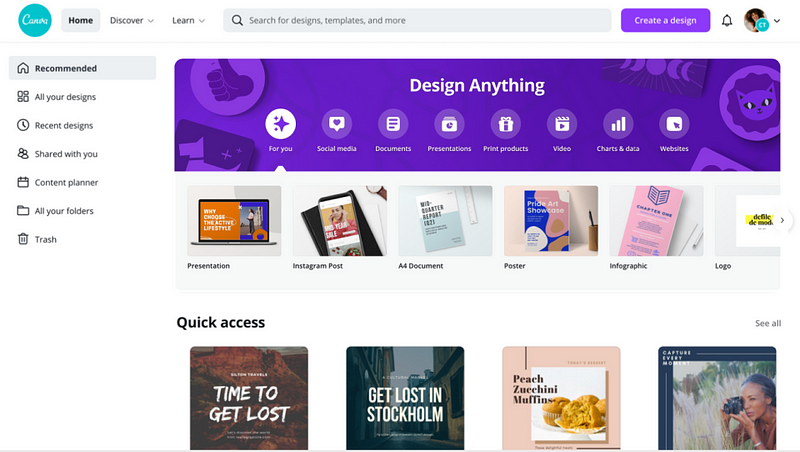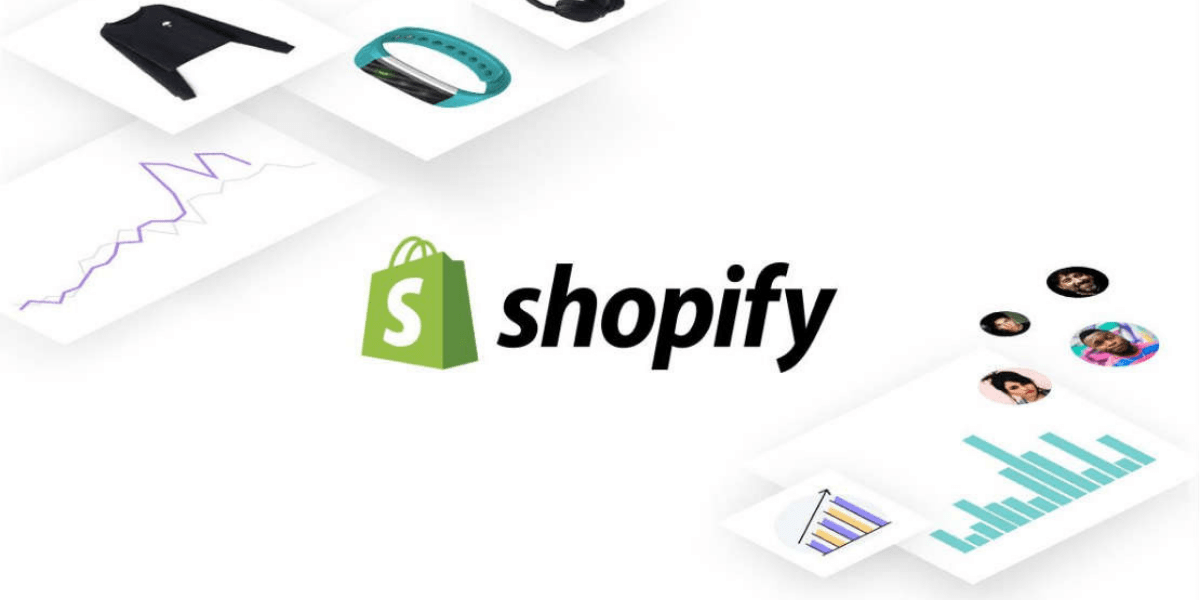Are you looking for a creative way to make money online? If you have a flair for design and want to turn your artistic skills into a lucrative income stream, then Canva might just be the perfect platform for you. With its user-friendly interface and vast array of design tools, Canva has become a popular choice for individuals and businesses alike.
In this comprehensive step-by-step guide, we will show how to make money with Canva. Whether you’re a graphic designer, a social media manager, a content creator, or simply someone with a passion for design, this guide will provide you with valuable insights and actionable strategies to harness the power of Canva and start earning.
From leveraging Canva’s design templates to creating custom designs for clients, we will explore various opportunities that can help you monetize your skills and creativity. Additionally, we’ll delve into proven strategies to attract clients, build a strong portfolio, and effectively market your services on Canva’s platform.
But before we dive into the specifics, let’s take a closer look at why Canva is an ideal choice for anyone seeking to make money through design.
- Accessibility and Ease of Use: One of the main advantages of Canva is its accessibility. You don’t need to be a design expert or have extensive technical knowledge to create stunning visuals. Canva’s intuitive interface and drag-and-drop functionality make it easy for beginners to get started quickly. With a wide range of pre-designed templates and design elements, Canva provides a solid foundation for unleashing your creativity and producing professional-looking designs.
- Diverse Design Capabilities: Canva offers a vast library of design elements, including fonts, icons, illustrations, and stock photos, allowing you to create visually appealing graphics for various purposes. Whether you’re designing social media posts, blog graphics, presentations, or even print materials like business cards and flyers, Canva has the tools and resources to bring your ideas to life.
- Collaborative Features: If you enjoy working with others or want to offer your design services to clients remotely, Canva’s collaborative features make it a breeze. You can easily share design projects with team members or clients, allowing for seamless collaboration and feedback. This collaborative aspect of Canva opens up opportunities for freelancers and design agencies to work remotely and expand their clientele globally.
Now that we’ve explored why Canva is a powerful platform for making money with your design skills, it’s time to dive into the step-by-step process of harnessing its potential. In the following sections, we will guide you through the various avenues and strategies to monetize your creativity and establish a successful income stream using Canva.
So, let’s get started and unlock the doors to a world of design opportunities and financial success with Canva!
Table of Contents
Step 1: Create an account on Canva
To begin your journey of making money with Canva, the first step is to create an account on the platform. Creating an account is simple and straightforward, and you have the option to choose between a free account or a paid account, depending on your specific requirements and budget.
- Visit the Canva website: Open your preferred web browser and navigate to the Canva website (Click here!).
- Sign up for an account: On the Canva homepage, you will see a “Sign up” button in the top right corner. Click on it to proceed with the account creation process.
- Choose your account type: Canva offers different types of accounts, including free and paid options. Consider your needs and select the account type that aligns with your goals and budget. If you’re just starting out and want to explore Canva’s features, a free account can be a great choice. However, if you’re serious about making money and want access to advanced features and a wider range of design elements, you may opt for a paid account, such as Canva Pro or Canva for Enterprise.
- Sign up with email or social media: Canva provides multiple sign-up options for your convenience. You can sign up using your email address by entering it in the provided field and creating a password. Alternatively, you can use your Google or Facebook account to sign up quickly by clicking on the respective buttons.
- Verify your account: After providing the necessary information, Canva may ask you to verify your account. This step helps ensure the security of your account and prevents unauthorized access. Follow the instructions provided by Canva to complete the verification process.
- Customize your profile (optional): Once your account is set up, you have the option to customize your profile. Adding a profile picture and a brief bio can help make your profile more professional and appealing to potential clients or collaborators.
Congratulations! You have successfully created an account on Canva. Now you can explore the platform’s features and embark on your journey to make money through your design skills. In the following steps, we will delve into the various ways you can leverage Canva to generate income and maximize your earning potential.
Step 2: Learn the basics of Canva

After creating your Canva account, it’s important to familiarize yourself with the platform’s basic features and functionalities. Understanding the interface, mastering design elements and templates, and learning how to export your designs are essential steps in your journey to making money with Canva.
Canva offers a user-friendly interface that is intuitive and easy to navigate. Spend some time exploring the different menus, tools, and options available. Familiarize yourself with the layout and organization of the platform. This will help you navigate efficiently as you start creating your designs.
One of the key strengths of Canva is its extensive library of design elements and templates. Take the time to explore the various categories and options available. Canva provides templates for social media posts, presentations, infographics, flyers, business cards, and much more. By understanding the range of design options, you’ll be better equipped to cater to different client needs and create visually appealing designs.
When using Canva, you can customize templates by adding your own text, images, and graphics. Experiment with different fonts, colors, and layouts to give your designs a unique touch. By mastering these customization techniques, you’ll be able to produce designs that align with your clients’ branding and requirements.
Additionally, it’s essential to understand how to export your designs in the appropriate formats. Canva allows you to download designs in various file types such as JPEG, PNG, and PDF. Different projects may require different file formats, so it’s crucial to select the right one to ensure optimal quality and compatibility.
To enhance your learning experience, Canva provides a wealth of tutorials, guides, and resources on their website. Take advantage of these materials to deepen your understanding of the platform and its features. You can find step-by-step tutorials, video guides, and even design tips and inspiration to elevate your skills and creativity.
Furthermore, the Canva community is vibrant and supportive. Engage with other Canva users through forums, social media groups, and online communities. By interacting with fellow designers, sharing knowledge, and seeking feedback, you can gain valuable insights and expand your network within the Canva ecosystem.
Remember, the more you practice and familiarize yourself with Canva, the more comfortable and proficient you will become in creating stunning designs. Building a solid foundation of Canva’s basics will set you up for success as you progress to monetizing your skills and earning money with the platform.
Step 3: Create designs for clients
Now that you have gained a solid understanding of Canva and its features, it’s time to put your skills to use and start creating designs for clients. This step opens up a world of opportunities to monetize your creative talent and establish yourself as a freelance designer.
One option is to leverage popular freelance platforms like Upwork or Fiverr. These platforms provide a marketplace where businesses and individuals post design projects, and freelancers like you can submit proposals and showcase their portfolio. By creating a compelling profile and highlighting your expertise, you can attract clients who are seeking design services.
Another approach is to directly reach out to small businesses in your niche or local area and offer your design services. This method allows you to establish a more personal connection and tailor your offerings to their specific needs. You can showcase your work through an online portfolio or by sharing relevant samples with potential clients.
When offering design services, it’s essential to determine the specific types of designs you specialize in. For instance, you may focus on creating eye-catching social media posts that enhance a brand’s online presence. Alternatively, you could offer services such as business card design, flyer creation, brochure design, or even custom illustrations. By narrowing down your focus and showcasing your expertise in specific areas, you can attract clients who are specifically seeking those types of designs.
It’s important to communicate effectively with clients to ensure you understand their design requirements and expectations. Ask questions, seek clarification, and gather as much information as possible before starting a project. This will enable you to deliver designs that align with their vision and needs, ultimately leading to satisfied clients and potential referrals.
To maximize your chances of success, consider investing time in building a strong portfolio that showcases your best work. Include a diverse range of designs that highlight your versatility and creativity. This portfolio will serve as a visual representation of your skills and help potential clients assess your abilities.
Remember, building a solid reputation takes time, so be prepared to start with smaller projects to gain experience and positive reviews. As you complete successful projects and receive positive feedback, your reputation will grow, leading to more significant opportunities and higher-paying clients.
Step 4: Charge Your Clients
Once you’ve honed your design skills and are ready to start making money with Canva, it’s essential to determine your pricing structure. Consider factors such as your experience, the complexity of the project, and the time and effort required to complete it. While setting your rates, it’s also crucial to research the market to ensure that your prices are competitive yet reflective of the value you provide.
Canva allows you to create different pricing tiers based on the scope of the project or the services you offer. For instance, you can offer basic design packages for social media graphics or more comprehensive packages that include branding materials, presentations, and custom illustrations. Clearly communicate your pricing options to your clients, either through your Canva profile or during the initial consultation, so they understand the value they will receive for their investment.
Step 5: Build a Portfolio
To attract clients and showcase your design skills, it’s crucial to build a portfolio that highlights your best work. Use Canva to create a visually appealing portfolio by organizing your designs into categories or projects. Include a variety of design samples that demonstrate your versatility and ability to cater to different styles and industries.
When selecting designs for your portfolio, focus on quality rather than quantity. Choose pieces that are visually engaging, well-executed, and represent your unique style and creativity. Additionally, consider adding client testimonials or case studies to provide social proof of your skills and the positive impact your designs have had on their businesses.
Step 6: Market Your Services
To effectively market your design services and attract clients, utilize Canva’s marketing features and leverage other online platforms. Start by optimizing your Canva profile to showcase your expertise, portfolio, and contact information. Use compelling visuals and engaging copy to create a professional and memorable impression on potential clients.
Additionally, take advantage of social media platforms to promote your design services. Create visually stunning social media posts using Canva to showcase your work, share design tips and insights, and engage with your target audience. Join design communities and participate in relevant discussions to network with other professionals and potential clients.
Collaborate with influencers, bloggers, or businesses in need of design services by offering to create custom graphics or branded templates for their platforms. This can help you gain exposure to a wider audience and establish credibility in your niche.
Consider offering free resources or design tutorials on your website or social media platforms. This not only adds value to your audience but also positions you as an authority in your field. By providing valuable content, you can attract potential clients who may eventually seek your professional design services.
Lastly, don’t underestimate the power of word-of-mouth marketing. Deliver exceptional designs and outstanding customer service to your clients, and encourage them to refer you to others. Positive client experiences and recommendations can significantly boost your reputation and lead to a steady stream of new clients.
Step 7: Continuously improve and stay updated
As with any skill or service, it’s important to continuously improve and stay updated on the latest design trends and best practices.
This can be done by taking online courses or tutorials, attending workshops or webinars, and staying informed about new features and updates on Canva.
By staying informed and improving your skills, you can ensure that you are providing the best possible service to your clients and that your designs are on trend and of high quality. Additionally, this will help you stay competitive in the market, and attract more clients.
Conclusion.
Canva is a powerful online graphic design tool that can be used to create professional-looking designs for various purposes.
By following the steps outlined in this guide, you can learn how to use Canva, create designs for clients, charge them for your work, build a portfolio, and market your services to potential clients.
With time, effort, and patience you can build a successful business with Canva as your primary tool.







